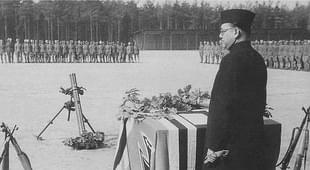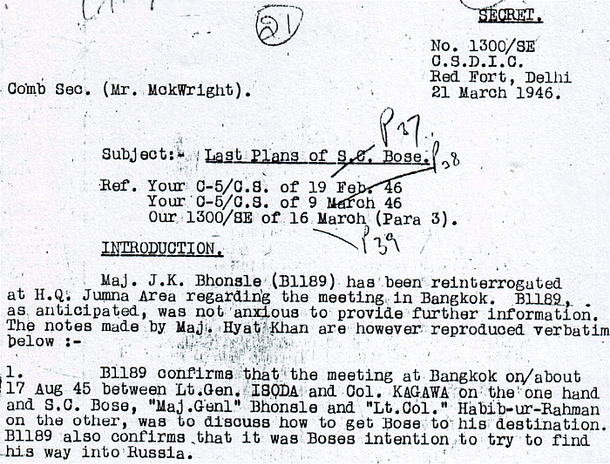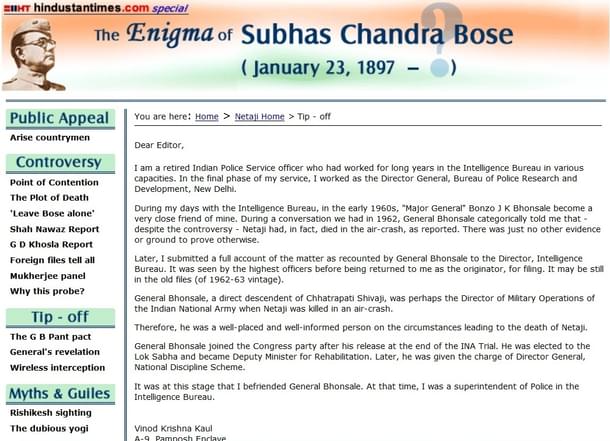Politics
IB Spied On INA Veterans, Too
Anuj Dhar
Apr 20, 2015, 12:20 AM | Updated Feb 24, 2016, 04:31 PM IST
Save & read from anywhere!
Bookmark stories for easy access on any device or the Swarajya app.


The Nehru government did this till the 1950s by making them join his dispensation and keeping a track of their whereabouts.
Fifteen odd years ago, I walked into the posh Greater Kailash residence of Vinod Krishna Kaul, IPS, ex-Director General, Bureau of Police Research and Development, and former Deputy Director at the Intelligence Bureau. After an animated discussion, Kaul, whose specialisation was hunting down spies, admitted that during the 1950s he had befriended Jagannath Rao K Bhonsle with a view to extracting some information from him.
Bhonsle, a descendent of Chhatrapati Shivaji, was Chief of Staff of the Indian National Army and one of the two INA veterans who were made junior ministers by Jawaharlal Nehru after 1947. Bhonsle — along with journalist-turned-Propaganda Minister and member of the War Council of Bose’s Azad Hind Sarkar in 1943, SA Ayer — led the Bombay branch of the Indian National Army (INA) Relief & Enquiry (R&E) Committee established in 1946 at Congress House. Vallabhbhai Patel was the body’s chair and patron.
It is my understanding, having studied the entire matter, that Prime Minister Nehru did not want the INA and others to regroup in India and pose a threat to a ‘peace-loving’ Congress. Hence, some former INA men were given some positions — mostly foreign assignments abroad in our missions. There is an IB file concerning the matter that is still in existence.
When he had won over Bhonsle’s trust, at that distant point in time the senior cop tried to find out what Bhonsle thought of Subhas Chandra Bose’s disappearance way back in 1945 (as Kaul told me). Bhonsle told Kaul that he believed that Bose had died in an aircrash in Taiwan. He obviously misled Kaul as his Raj era interrogation report — kept in the inaccessible Ministry of Defence Archive till 1997 — showed that he had direct knowledge that Bose might have gone to Soviet Russia.

All the same, Kaul reported the matter back to the then Director, Intelligence Bureau. After he had pursued it, BN Mullick, Nehru’s confidante and a most shady character in the Netaji mystery matter, asked Kaul to file it.
Kaul told me that his report would still be lying in the old files of 1962-63 vintage. His intention in telling me all this was to convince me of Netaji’s death in Taiwan. From the harangue I was subjected to at his residence over a cup of tea and snacks, I could make out that he was pro-Nehru in his outlook. I then persuaded him to give me his statement in writing. He obliged me. I came back to the Hindustan Times office, and handed over the letter to my editor.
The text of that letter was made use by HT’s website. Now that website has apparently gone offline. But since I have the entire back-up, I can very well reproduce the relevant page for everyone to see:

PS: It is now in the public domain that India’s first government, led by Nehru and Patel, not only authorised snooping on the extended family of Subhas Chandra Bose well after Independence, but on many other ex-Indian National Army veterans, including prominent Mumbaikars who served as union and state ministers.
For more than a decade, Anuj Dhar has devoted himself to resolving the mystery surrounding the disappearance of Subhash Chandra Bose. His 2012 bestselling book India's Biggest Cover-up (Netaji Rahasya Gatha in Hindi) triggered the demand for declassification of the Bose files.





